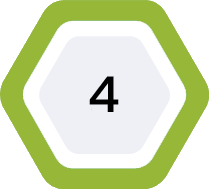






It helps to maintain a database of Prospects/Clients for future analysis/projection.

Enquiry Entry

Call Sheet Entry

Unit Directory

Buyer Detail

Stage Bill Detail

Progress Bill

Reports

Mass Billing

Client Payment Alerts

Multi Filter Reports




Customization enables businesses to adapt the ERP software to their unique workflows and requirements. It allows for the incorporation of specific industry practices, business processes, and terminology.
By customizing the software, users can streamline their operational workflows. This can reduce manual work, minimize data entry errors, and increase overall efficiency.
Customized reporting features allow businesses to create personalized reports that address their specific data analysis and decision-making needs. This is crucial for gaining insights into the business's performance and making informed decisions.
The ability to customize an ERP system can give a business a competitive advantage. It allows them to align their software with their unique value proposition and customer demands.
As a business grows and changes, customization can help the ERP system scale with it. New features and workflows can be added, ensuring that the software remains a valuable asset over time.
Customization can lead to higher user adoption rates. When employees see that the ERP software has been tailored to their specific needs, they are more likely to embrace it and use it effectively.
Customization can help eliminate unnecessary features and processes, reducing the complexity of the ERP system. This can lead to cost savings in terms of software licensing, maintenance, and training.
Certain industries have specific regulatory requirements. Customization allows businesses to build compliance features into their ERP system, helping them adhere to industry standards and regulations.
Customization can facilitate the integration of innovative technologies and practices as they emerge in the industry. Businesses can stay at the forefront of their field by continually adapting their ERP system.
As SUCHAN is providing services or products to clients, customization can enhance customer satisfaction by tailoring processes to meet their specific needs. This can lead to better customer relationships and retention.
A well-defined and stable API (Application Programming Interface) enables developers to build upon existing functionality without altering the core code. When extending software, ensure that the API remains backward-compatible to avoid breaking existing integrations.

All Rights Reserved By Suchan Software Pvt. Ltd.